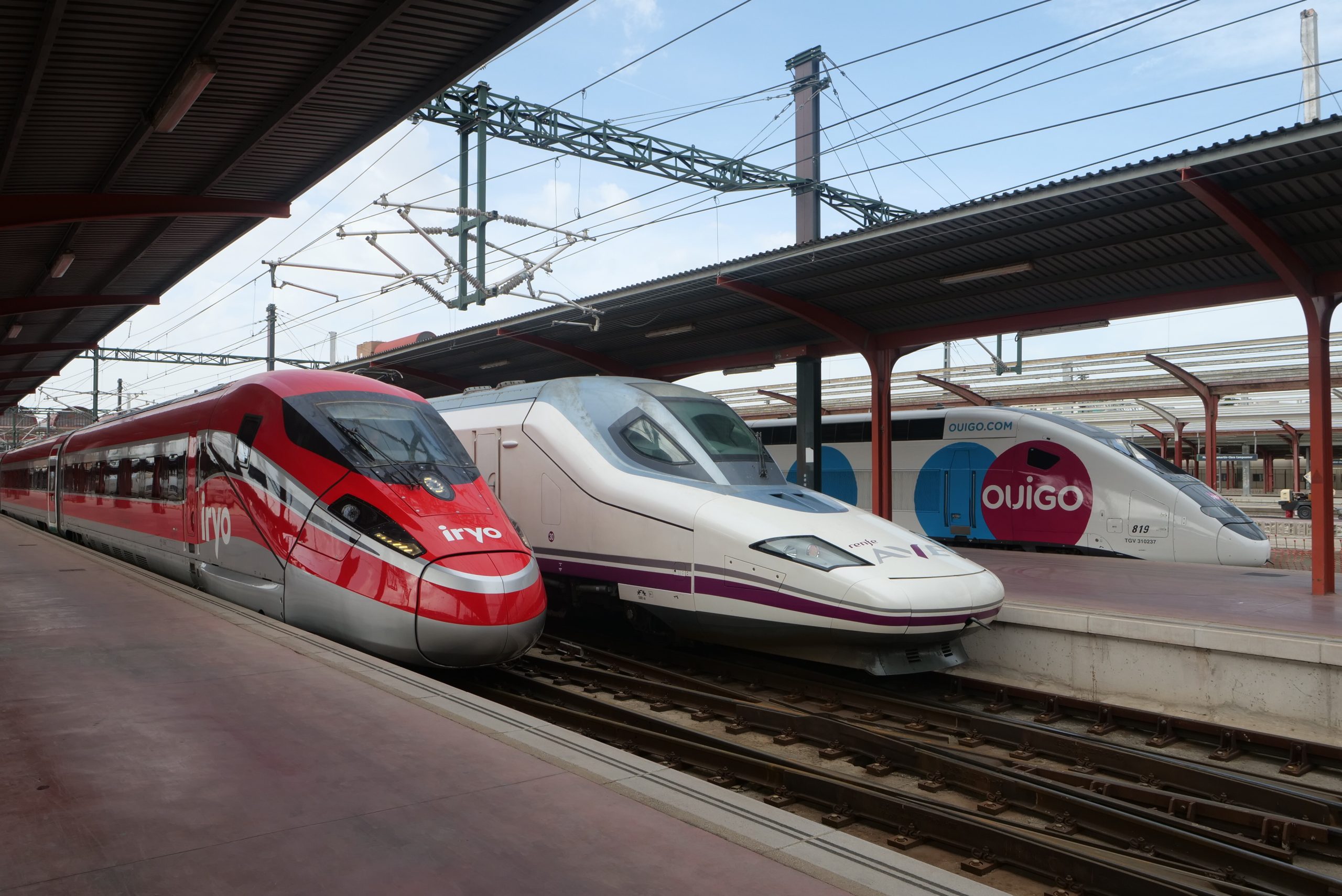
Adif has launched the second phase of rail passenger liberalisation process through a framework capacity offer on three new corridors which will add more than 72 new daily services.
Madrid – Galicia, Madrid – Asturias/Cantabria and Madrid – Cádiz/Huelva are the three corridors opened to competition.
As the first step of the process, Adif and Adif AV published the network statement on October 29, 2024 including the preliminary information on the capacity offer, which sets out the lines on which the framework capacity offer is made and the time slots available for circulation.
On Madrid – Galicia route, there are 32 train paths per day, 24 on Madrid – Asturias/Cantabria and 16 on the Madrid – Cádiz/Huelva line. Due to the publication, the railway operators will be able to advance their analysis and make progress in the configuration, where appropriate, of their business plans.
In the first quarter of 2025, Adif will publish the process schedule and the rules for its development, in accordance with objective, transparent and non-discriminatory criteria, which will also maximise the use of the railway network.
Under this phase, it is proposed the possibility of formalising multi-annual framework agreements between Adif and the railway operators, with the aim of providing greater legal certainty and facilitating optimal planning of schedules and operations. The process, which will be supervised by the Spanish National Markets and Competition Commission (CNMC), will conclude at the end of 2026, with the signing of these framework agreements that would allow the companies to begin their operations.
In this second offer of framework capacity, Adif is playing a proactive role in stimulating greater use of the network, bringing its benefits to more territories and contributing to the modal shift towards railway transport. If in the first offer of framework capacity 15 provinces benefited, representing 54% of the Spanish population, in this second phase 13 more provinces will be added, reaching almost 70% of the population.
A different model of liberalisation
The first phase of rail passenger liberalisation in Spain culminated in 2020 which included the high-speed lines between Madrid and Barcelona, as well as the Madrid – Valencian Community and Madrid – Seville/Malaga corridors.
Since the opening of passenger services to competition, Spain recorded an increase in demand on different corridors, especially intense in those operated by three companies.
After analysing the experiences of other European countries, Spain decided to implement a different model of liberalisation of rail passenger transport, which, for the first time in Europe, has achieved competition between three operators on the same high-speed corridor.
The entry of new companies from 2019 onwards into the Spanish railway sector, in which three companies currently operate under four commercial brands – Ave and Avlo (Renfe), Ouigo and Iryo. All these companies generated a positive impact of EUR 578 million in 2023, according to the CNMC Report on the Balance of the Liberalisation of Passenger Transport by Rail published in 2024.
Adif Alta Velocidad collected EUR 148 million more in fees on the liberalised corridors in 2023, with an increase of 52% compared to 2019. The rest of EUR 87 million corresponded to the companies’ higher revenues compared to Renfe’s revenues when it operated as a monopoly.
Of the 41 million commercial passengers, 31 million will use high-speed rail in 2023, 10 million more than in 2019. Iryo and Ouigo accounted for a total of 10.6 million passengers.
The success of the first phase of rail liberalisation is confirmed by the traffic and the transfer of the modal share. Traffic (trains per km) grew by more than 30% in 2022 and by more than 40% during 2023, consolidating traffic higher than that recorded before the pandemic. The recovery is also faster and greater in those corridors where the market effectively opens earlier.
A report published by CNMC shows a 22% and 23% drop in ticket prices on the Madrid – Barcelona and Madrid – Valencia rail routes, respectively, in the first quarter of 2023 compared to the same period of 2022. The entry of new operators into the Spanish railway system has also boosted the modal share of trains over planes and is gradually shifting road transport towards railways. In 2022, four out of five passengers chose to travel on the Madrid – Barcelona route, and vice versa, by train.
One of the priority objectives of Spain’s rail passenger liberalisation is related to the use of the capacity of the railway network with a high-speed network of more than 4,000 km. Thirty years after the commissioning of the 470 km Madrid – Seville high-speed line, the high-speed network has continued to expand with investments exceeding EUR 57 billion. Since then, the high-speed network in Spain has multiplied by more than eight.
Spain ranks the second in terms of world’s high-speed rail network, after China, and has under construction 772 km of high-speed lines, according to the 2023 edition of High-Speed Rail Atlas published by the International Union of Railways (UIC). The country also plans to build 789 km of high-speed rail routes which will allow trains to run between 250 km/h – 300 km/h.
Share on:



